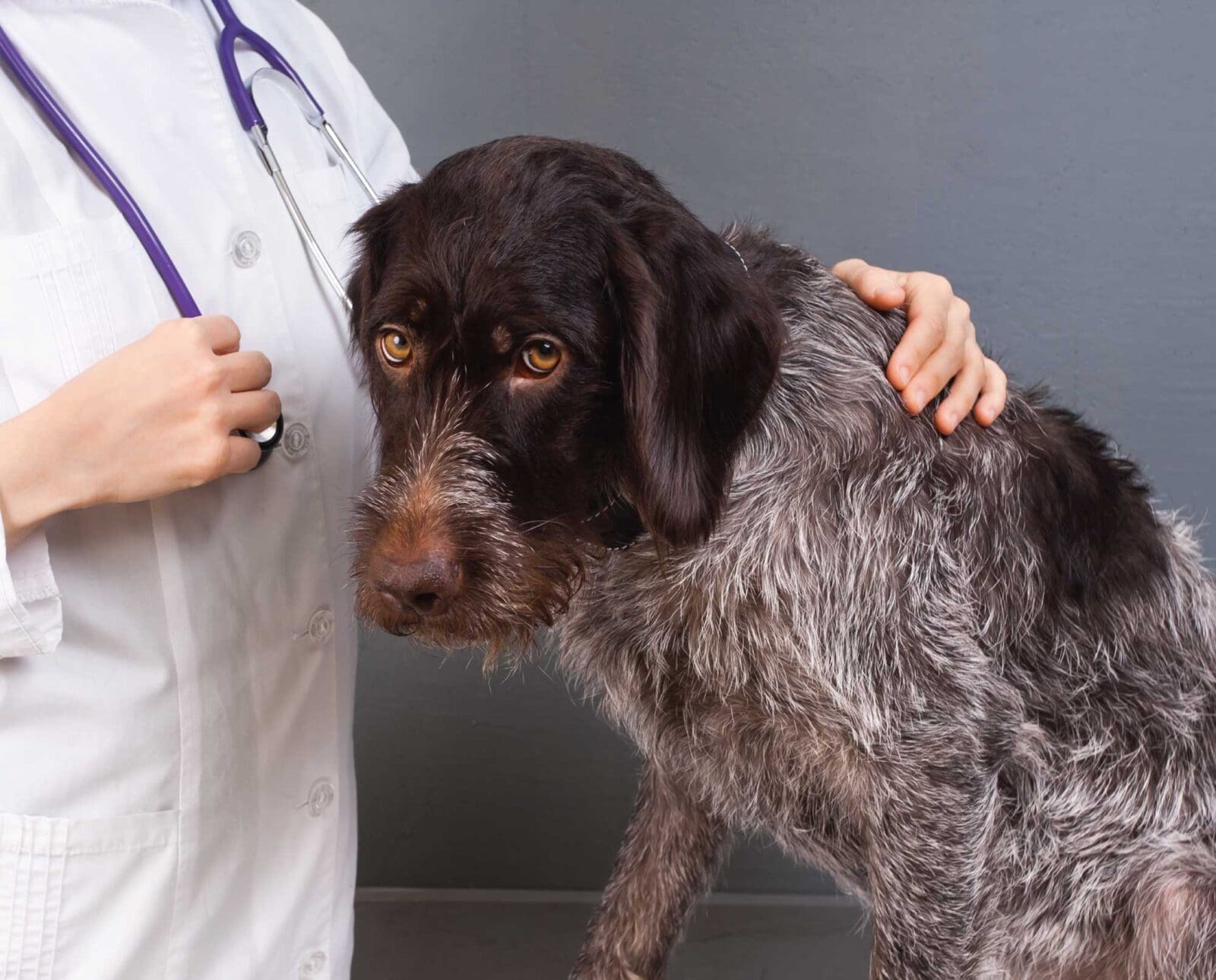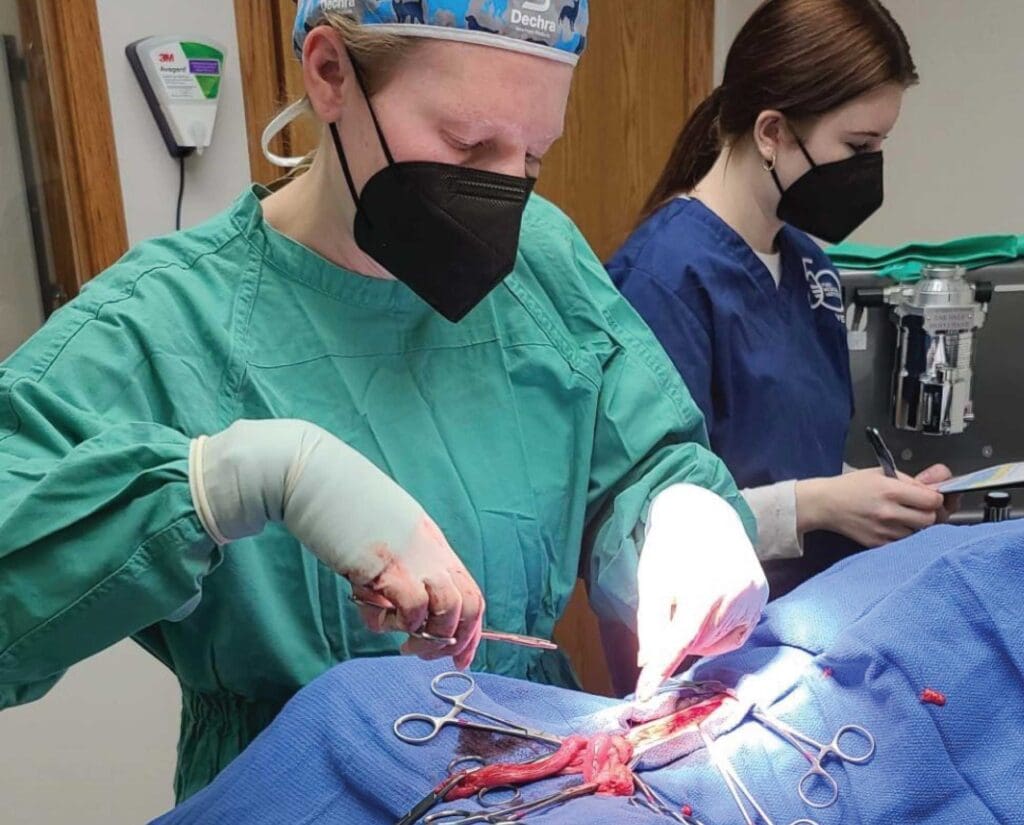
Considering the latest science and veterinary recommendation when making the decision to spay or neuter your dog
For most dog breeds, there is no black-and-white answer regarding the best time to neuter or spay your dog. Although several studies now support later sterilization, some breeds still don’t have a lot of data on them. Another component, and perhaps the most important piece that needs to be considered, are the dog’s owners themselves. A dog owner’s ability to keep and maintain intact animals and shoulder additional financial responsibilities that may come with them is a huge consideration when deciding when to neuter or spay your dog.
Here’s my professional opinion regarding when to spay or neuter your dog.
Listen to more articles on Apple | Google | Spotify | Audible
What is Spaying and Neutering?
Many folks have misconceptions about the terms “spaying” and “neutering.” Understanding these terms is important before diving into why spaying and neutering are important for your dog.
Spaying refers specifically to female dogs. When you take your female dog into your vet’s clinic to get spayed, your dog’s surgeon will remove her ovaries, fallopian tubes, and uterus. This sterilizes her, rendering her permanently unable to get pregnant. In addition to making your dog unable to reproduce, her heat cycle will end, and any instinctual breeding behaviors will stop.
Neutering, also called castration, refers specifically to male dogs. When male dogs go into their neutering appointment, their testicles are removed. Neutering removes a male dog’s ability to breed with a female and any instinctual breeding behaviors they have. Neutering is a less invasive surgical procedure compared to spaying.
“The procedure has no effect on a pet’s intelligence or ability to learn, play, work or hunt,” according to the American Veterinary Medical Association. However, remember that dog sterilization procedures remove glands and organs your dog was born with. Ovaries and testes produce hormones that are important to a dog’s development.
Recent Dog Spaying and Neutering Research
For decades, veterinarians were taught the mantra to spay and neuter dogs at about six months of age. In some cases, dogs would be sterilized even sooner. This was an effort to decrease unwanted pregnancies and subsequent homeless pets. In addition to reducing the number of stray dogs, spays and neuters are easier to perform on juvenile dogs and potentially carry a lower surgical risk for your pet.
Numerous studies have been launched to look at the risks of joint disease and cancer development in several breeds. We have learned that a single blanket recommendation cannot represent all breeds.
One of the most famous studies on this subject was published in 2013 by UC Davis regarding Golden Retrievers. Goldens are a unique bunch and, unfortunately, have a huge genetic risk for cancer and bone and joint disease development. The study found that performing early spays and neuters (before one year of age) significantly increased the risk of developing diseases, such as hip dysplasia and life-threatening cancers. A quick review of UC Davis’s Golden Retriever study will tell you all the information you need to know straight from the horse’s mouth. Their final recommendations were to consider waiting to neuter Goldens until they are at least a year old or leaving them fully intact. Additionally, they recommended not spaying female Goldens at all or waiting until at least a year of age.
In 2020, UC Davis expanded this study to include 36 breeds. Researchers looked at the risk of developing joint disease, certain cancers, and urinary incontinence after spaying or neutering. The American Kennel Club currently recognizes 200 breeds, and the United Kennel Club recognizes over 300, so this study still lacks a diverse representation of dog breeds. However, if you own one of the breeds on UC Davis’ list, it’s an excellent reference for helping guide people’s decisions concerning when they should spay or neuter.
Not every dog needs to wait until they’re a year of age to be spayed or neutered. Some breeds may have actual health benefits regarding neutering or spaying before a year of age.

Spaying and Neutering Considerations for Hunting Dogs
Other factors to consider when deciding to spay or neuter your hunting dog include the time of year, your living situation, and any financial concerns you may have. Older, heavier dogs usually cost more to spay or neuter because it’s more work and often requires more anesthesia and increased supplies. You also likely don’t want to spay or neuter your best hunting bud during hunting season or a week before they’re supposed to head to dog training camp. Most dogs take two to three weeks to recover from these surgeries fully. However, older dogs are potentially more prone to developing scrotal hematomas (swelling of the scrotum) or slower incision healing, which can lengthen their recovery time.
A common misconception is that female dogs are healthier if allowed to have a single litter. This is not true. Pregnancy carries a whole host of potentially life-threatening diseases or concerns. Labradors, for instance, are at a higher risk of dystocia (difficult birth) and need C-sections more often than most other hunting breeds.
Besides unwanted pregnancies, leaving dogs intact also carries other potential health risks. Mammary cancer is far more prevalent in intact females and has strong familial ties, similar to humans. Prostatic disease and cancer are also a higher risk in intact males. Obviously, a dog cannot get testicular cancer if he does not have testicles.
For sporting dogs under 100 pounds, waiting to neuter or spay your dog until they’re one or two years old is recommended. This allows for proper bone growth, joint development, and growth plate closure. For most families who own a female dog, this means they will have to plan for one to two heat cycles. Heats can last three to four weeks; if an intact male is in the home, a heat cycle can feel like an eternity. I highly recommend that folks think long and hard before buying a brother-sister duo, as this can create undue stress on the owners later. For females, most veterinarians also recommend waiting two to three months after a heat cycle to spay a female dog because this allows the mammary tissue and uterine vessels to shrink. Waiting those couple of months helps decrease the surgical risk for your pet and your veterinarian’s stress level during the surgery.
All of these recommendations should be kept in mind when deciding when to spay or neuter your dog. However, the timing that works best for your family is the best time to perform the surgery. I have had clients agonize over a two-week age difference. Remember, the studies I mentioned are broad and based on a certain number of individuals. Two to three weeks here or there is unlikely to impact your dog’s future negatively. Also, remember that keeping your dog intact does not guarantee a future free of orthopedic concerns or cancer development.
Obtaining a pup from a reputable breeder who has performed multiple genetic and health checks on the dog’s parents can help limit future heartache. Annual veterinary checkups, helping your dog maintain a healthy weight, and monthly full-dog palpations for any new lumps or bumps are your best defense to keeping your pet healthy, happy, and hunting.





Great article. I keep all my setter males intact. If you talk to pro field trial handlers as well as guides neutered males don’t perform at the level they did prior to neutering. I’ve seen the same in friends neutered males. Just my 2 cents.
I am ALL for the Fixing of Dogs and Cats.
Not only does it prevent over Population but has added Health Benefits for the Animal.
My Mom waited to long to get her Dog Spayed and died from Breast Cancer.
The UC Davis study proved that mammary cancer is more prevalent in spayed females than intact females. My female GSP whom I spayed after one year and hunted, and won and placed high in several Time Trial field trials under UFTA rules. Went on to develop mammary tumors that I had to pay for the removal of she died at 16 years. The University of Tennessee at Knoxville college of veterinary medicine did a study and determined that spaying and neutering is the reason Cushing Disease is at epidemic levels, and they recommend vasectomies and tubal ligations instead. I had a male German Shorthair Pointer whom developed an enlarged prostate and the veterinarian recommended he be neutered saying it would help. He then developed Cushing Disease the Veterinary specialist from the University of Tennessee at Knoxville stated he developed it due to being castrated. The University of Michigan Veterinary school proved that castrations or neutering doesn’t help in reducing enlarged prostates! Dogs need their reproductive glands for proper health it is unnatural and unhealthy to perform these surgeries!
Unsightly Weigh gain was consequently after neutering GSP. Therefore, I’ll not use this method for controlling my male. In the event of my GSP being coaxed/ lured by coyote in estrus I will/ must stay extremely vigilant in the month of February & March during coyote’s breeding season.
My dog had Cryptorchidism. Neutered at 18 months.
As a vet surgeon with more than 30 years of profesional work I can assure that sapayimg or neutering has not at all any effect on the stray dogs population
The most important thing is owner culture level
Highly culturalized areas has no stray dogs in opposition with lower education or lower income neighborhood
At least in my country